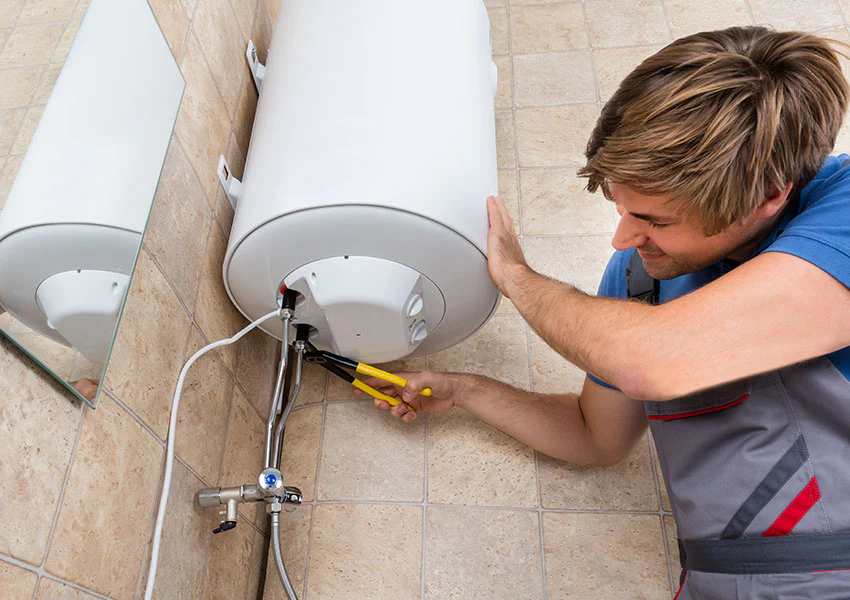Easy Guide to Caring for Your Home's Hot Water SystemWhat to Care for Your Home's Hot Water System EffectivelyMaintaining Your Home's Hot Water System: Key Tips
Easy Guide to Caring for Your Home's Hot Water SystemWhat to Care for Your Home's Hot Water System EffectivelyMaintaining Your Home's Hot Water System: Key Tips
Blog Article
Listed here below you will find a bunch of great tips when it comes to Tips For Maintaining Your Hot Water Heater.

Warm water is crucial for daily comfort, whether it's for a revitalizing shower or cleaning dishes. To ensure your hot water system runs effectively and lasts much longer, normal upkeep is key. This short article supplies sensible tips and insights on how to maintain your home's hot water system to prevent disturbances and pricey repairs.
Introduction
Preserving your home's hot water system could appear challenging, however with a few basic actions, you can guarantee it runs efficiently for several years ahead. This overview covers every little thing from recognizing your warm water system to do it yourself upkeep tips and knowing when to contact expert assistance.
Value of Preserving Your Warm Water System
Routine maintenance not only extends the lifespan of your hot water system but also guarantees it runs efficiently. Disregarding upkeep can bring about lowered efficiency, higher energy expenses, and also early failure of the system.
Indications Your Hot Water System Demands Maintenance
Understanding when your warm water system needs focus can prevent major concerns. Watch out for signs such as irregular water temperature, weird sounds from the heating unit, or rustic water.
Flushing the Hot Water Heater
Flushing your hot water heater eliminates debris accumulation, improving performance and prolonging its life.
Checking and Replacing Anode Rods
Anode rods prevent rust inside the tank. Checking and replacing them when worn out is essential.
Complex Concerns Needing Professional Aid
Instances include significant leakages, electrical problems, or if your hot water heater is regularly underperforming.
Routine Specialist Maintenance Benefits
Specialist upkeep can include detailed assessments, tune-ups, and guaranteeing conformity with security standards.
Checking and Adjusting Temperature Level Settings
Readjusting the temperature setups ensures optimum performance and security.
DIY Tips for Upkeep
You can perform a number of upkeep tasks on your own to keep your warm water system in top problem.
Checking for Leakages
Routinely check pipes and connections for leakages, as these can lead to water damages and greater bills.
Recognizing Your Hot Water System
Before diving right into upkeep tasks, it's practical to understand the fundamental parts of your hot water system. Normally, this includes the water heater itself, pipes, anode poles, and temperature controls.
Regular Monthly Upkeep Tasks
Normal monthly checks can assist capture minor problems prior to they rise.
Testing Pressure Alleviation Valves
Checking the stress relief valve ensures it works appropriately and prevents excessive pressure build-up.
Shielding Pipelines
Insulating hot water pipes minimizes warmth loss and can conserve energy.
When to Call a Professional
While DIY maintenance is helpful, some concerns call for professional competence.
Verdict
Normal upkeep of your home's hot water system is important for effectiveness, longevity, and price savings. By following these pointers and understanding when to seek professional help, you can ensure a reputable supply of hot water without unexpected interruptions.
How to Maintain an Instant Hot Water Heater
Before tinkering with your hot water heater, make sure that it’s not powered on. You also have to turn off the main circuit breaker and shut off the main gas line to prevent accidents. Also turn off the water valves connected to your unit to prevent water from flowing into and out of the appliance. 2. When you’re done, you have to detach the purge valves’ caps. These look like the letter “T” and are situated on either side of the water valves. Doing so will release any pressure that has accumulated inside the valves while at the same time avoid hot water from shooting out and burning your skin. 3. When the purge valves’ caps are removed, you have to connect your hosing lines to the valves. Your unit should have come with three hoses but if it didn’t, you can purchase these things from any hardware or home repair shops. You can also get them from retail stores that sell water heating systems. Read the user’s manual and follow it to complete this task properly. When the hosing lines are connected, open the purge port’s valves. 4. You should never use harsh chemical cleaners or solutions when cleaning your unit. Make use of white vinegar instead. It should be undiluted and you’ll probably use about 2 gallons. 5. Now flush your water heater. This task should probably take about 40 minutes. We can’t give you specific directions for this because the procedure is carried out depending on the type, model and brand of your heater. With that being said, refer to the user’s manual. 6. When you’re done draining the unit, you have to turn off the purge port valves again. Remove the hosing lines that you earlier installed on each of the water valves. Put the valve caps (purge port) back in their respective places and be very careful so as not to damage the rubber discs that are found inside these caps. 7. Now that everything’s back in place, check your user’s manual again to find out how to reactivate your water heating system. 8. Once it is working, turn one of your hot water faucets on just to let air pass through the heater’s water supply pipes. Leave the tap on until water flows smoothly out of it. https://www.orrplumbing.com/blog/2014/september/how-to-maintain-an-instant-hot-water-heater/

As a fervent reader about How to Maintain a Hot Water Heater in a Few Simple Steps, I figured sharing that piece of writing was a good idea. Are you aware of somebody who is in the market for the topic? Why not promote it. Thank you for going through it.
Customer Reviews Report this page